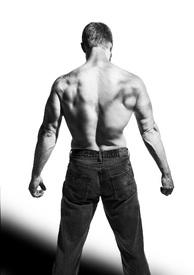Form critique thread, post your videos here.
Options
Replies
-
You're gonna have to make the video public. Or just post it on youtube or something.
ok I will fix it!
https://drive.google.com/file/d/0Bx2J7F9s197XVHB6amNLdUdhYlU/view?usp=sharing
Did that work?
I should note that this was my third set or so.
Yes we can see the video now. Ignore the email request you got because I clicked on it before you made this public and I requested access.
I think the cause of this forward lean could be ankle mobility.
I'd be curious what kind of shoes you were squatting in.
I would be curious what the squat looks like from the back specifically between the ground and your hips. If you can resubmit a video such that I can see the ankle, knee and hip joints it might provide additional useful information.
As for cueing, I would like to see what happens if you attempt to point your toes outward slightly more and screw your feet into the floor. What I mean by that is, press your feet into the floor and apply a rotational force in the outward direction.
If you try this, take a little bit of weight off the bar.
I will try to get a new video next Saturday and post the angles you asked for.
I'm squating in really old Sketchers - they have a minimalist sole and whatever sponge was there disappeared years ago.
If I try screwing my feet into the floor, do you mean from my toes or from ankles? Or... say if it were my right leg, do I rotate/screw counter clockwise or clockwise?0 -
Right foot screws clockwise (outward/external rotation), left foot screws counterclockwise (outward/external rotation)
Done properly you should feel your entire foot flush up against the floor.0 -
I'm guessing ankle mobility is causing forward lean and bar path. I wonder if you initiate thinking about sitting straight down (rather than back) if you might not lean as much.0
-
Screwing your feet into the floor is my cue to activate glutes.0
-
Sometimes that cue can help people feel their foot flush up against the ground and in some cases help to prevent the foot from leaving the floor.
I don't think it's going to mitigate this issue but it may help some.
i'm just taking a guess that it's the limited ankle dorsiflexion that's causing the heels to lift at the bottom of the squat .
0 -
Ok! I will try this today then. Thanks everyone. I do know I don't have as flexible ankles as some (example if I try downward facing dog, my heels don't even have a hope of touching the floor) but I don't think it's extreme inflexibility either. I always thought it was because my hamstrings are not very flexible (can't touch toes very easily and some days, not at all).
So I'll decrease the weight, try screwing my feet in and see how that goes. Would doing a high-bar squat help?
Maybe I'll try harder to working in stretching sessions. Every little bit probably helps.0 -
Ok! I will try this today then. Thanks everyone. I do know I don't have as flexible ankles as some (example if I try downward facing dog, my heels don't even have a hope of touching the floor) but I don't think it's extreme inflexibility either. I always thought it was because my hamstrings are not very flexible (can't touch toes very easily and some days, not at all).
So I'll decrease the weight, try screwing my feet in and see how that goes. Would doing a high-bar squat help?
Maybe I'll try harder to working in stretching sessions. Every little bit probably helps.
High-bar generally requires even more ankle flexibility, IMO.0 -
I am also curious - is the forward lean likely to cause injury at higher weights?0
-
I am also curious - is the forward lean likely to cause injury at higher weights?
I've found that it puts a lot of stress on the lower back, so most likely yes. Plus I can see your heels lifting off the ground already so as the weight gets heavier you're simply going to fall over.0 -
I am also curious - is the forward lean likely to cause injury at higher weights?
I've found that it puts a lot of stress on the lower back, so most likely yes. Plus I can see your heels lifting off the ground already so as the weight gets heavier you're simply going to fall over.
Well that's no good!0 -
I am also curious - is the forward lean likely to cause injury at higher weights?
I've found that it puts a lot of stress on the lower back, so most likely yes. Plus I can see your heels lifting off the ground already so as the weight gets heavier you're simply going to fall over.
Well that's no good!
You can see how technique is a critical part of not only building strength and size, but injury prevention as well. A lesson many of us (me, many times) have learned the hard way.
0 -
I posted this in the women's Stronglifts forum, but thought I'd also post here for a form check on squats. I'm really trying to nail this down before progressing any further.
 http://youtu.be/tBu7UZcTp4g 1
http://youtu.be/tBu7UZcTp4g 1 -
Wow, good form if that is still in starting stage.
Bar stays right over mid-foot. (last or 2nd last rep appears a slight shift forward, may have gone with head tilting down)
So keep head at same angle not moving while you move.
Are those squishy running shoes? If so they won't be a stable platform eventually.
Great depth too.
Safety catches could go up too - no problem with interference, but big drop if there is a problem.1 -
@ninenines ... I agree with @heybales on the shoes. The only thing I see is perhaps a loosening in your traps/shoulders that you could work on. (Valsalva maneuver.) Otherwise, your squat looks good -- looks like mine in a lot of ways.1
-
@ninenines
Looks real good. Nice work.
and
If that's your home gym, try barefoot.nakedraygun wrote: ».. I agree with @heybales on the shoes.
1 -
Cheers guys! @heybales not so much starting stage; I've been going for a few months, slowly. I've been spending a lot of time working on my form, but needed some confirmation that I was going OK.
I'll try out some different options with shoes. Those are my netball shoes, so they are actually firmer than regular running shoes and I've been wearing them because they are the ones with my orthotics. I found I was able to get better form wearing them (probably because of raised heel), but I appreciate that getting to heavier weights they could become problematic.0 -
Ok, deadlifts this time, would appreciate any thoughts on form. These are at 80kg.
 http://youtu.be/t6qLsRKnHII 0
http://youtu.be/t6qLsRKnHII 0 -
Ok, deadlifts this time, would appreciate any thoughts on form. These are at 80kg.
 http://youtu.be/t6qLsRKnHII
http://youtu.be/t6qLsRKnHII
Go to Youtube and look for Mark Rippetoe Deadlift. Watch his tutorial videos.
Basically there's a few setup issues going on that are contributing to the movement issues in your deadlift.
In your starting position in the video, you are sitting down and back too far and the result is that your scapula is behind the barbell instead of over it, and your hips are too low. (Aside: I suspect you're also too far from the barbell in your start position)
Because of this, you'll notice that your hips rise early and your scapula moves over the barbell BEFORE the barbell leaves the floor.
In a proper deadlift, the following criteria need to be met:
a) The barbell should be over the center of your foot.
b) The scapula should be directly over the bar.
c) before you pull, your spine should be extended and your shins should be in contact with the bar.
Most often, if you are not in proper position and there is enough weight on the bar, your body will attempt to move into the proper position before the barbell leaves the floor.
Check out rippetoe's videos as a great starting point on deadlift setup.
1 -
Thanks @SideSteel I just wish I wasn't at work so I could go watch some videos and try a better set up! I think I totally misread the scapula over the bar and was thinking shoulders above the bar, so that will make a big difference.0
-
Thanks @SideSteel I just wish I wasn't at work so I could go watch some videos and try a better set up! I think I totally misread the scapula over the bar and was thinking shoulders above the bar, so that will make a big difference.
Yep, that's not uncommon.
The front of the shoulders should actually be in front of the barbell so that the scapula can be directly over the bar.
2






